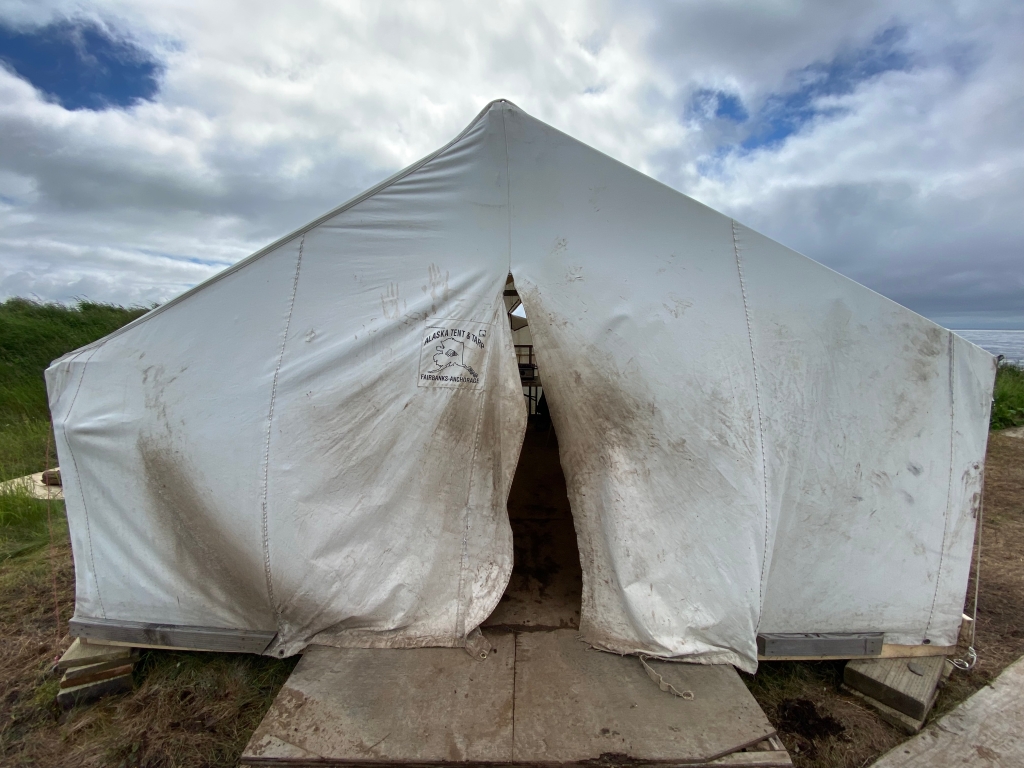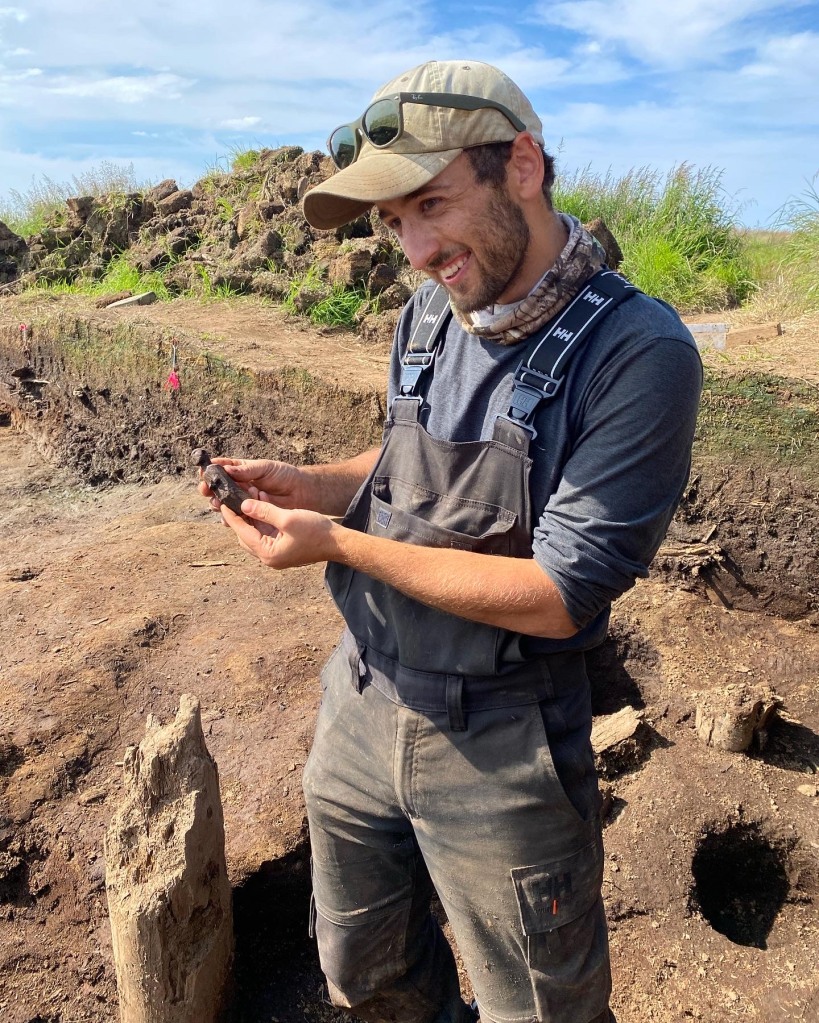Nunalleq Field Season 2023 – Wrapping Up
(Pictured above) The field tent and main trench. At the time of these photos, the boardwalk had just been unearthed and several layers of house-floor were soon to follow.
(Pictured below) Important finds such as ulu blades, dart shafts, grass braids, arrowheads, masquettes, and animal remains

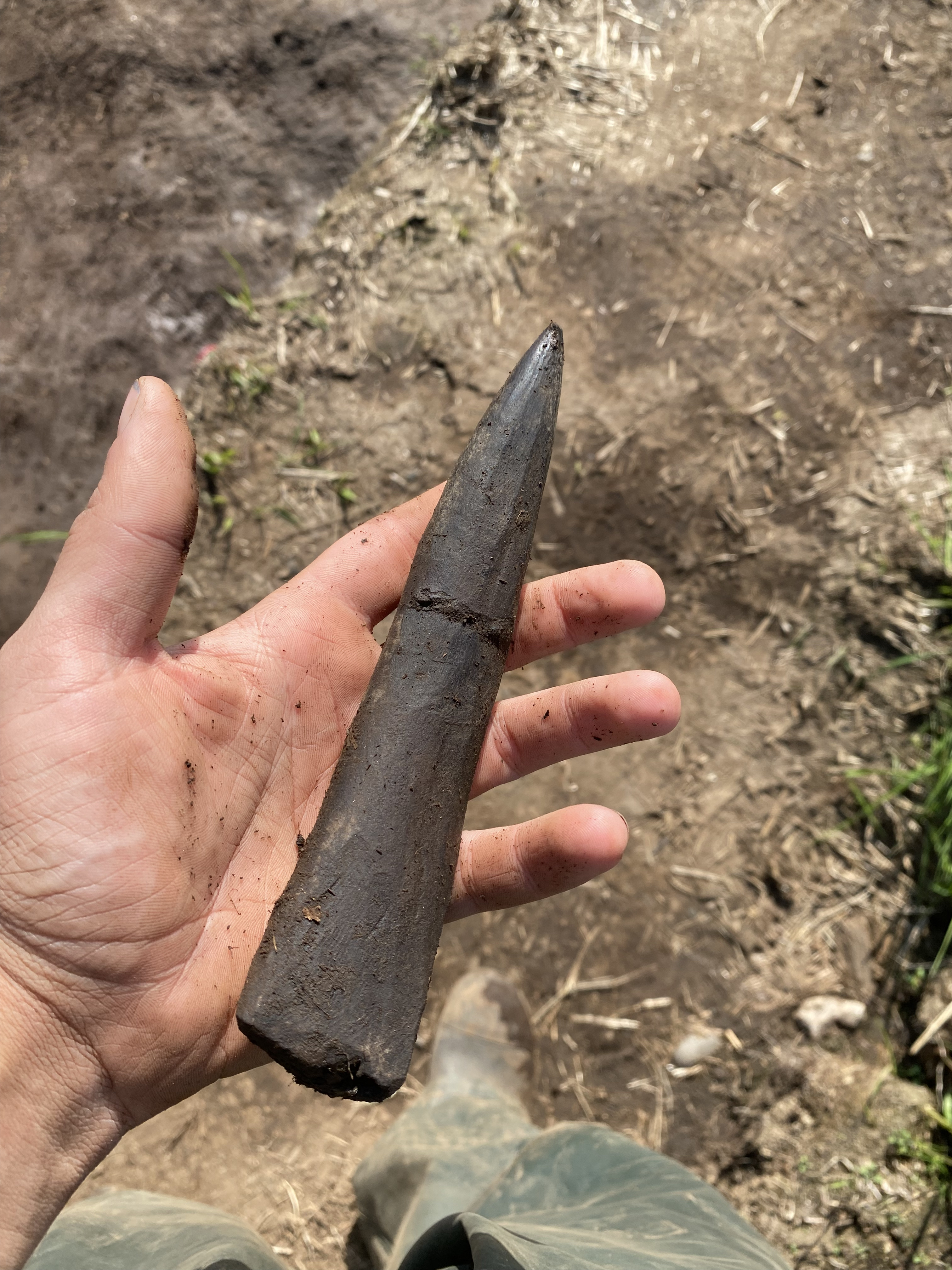

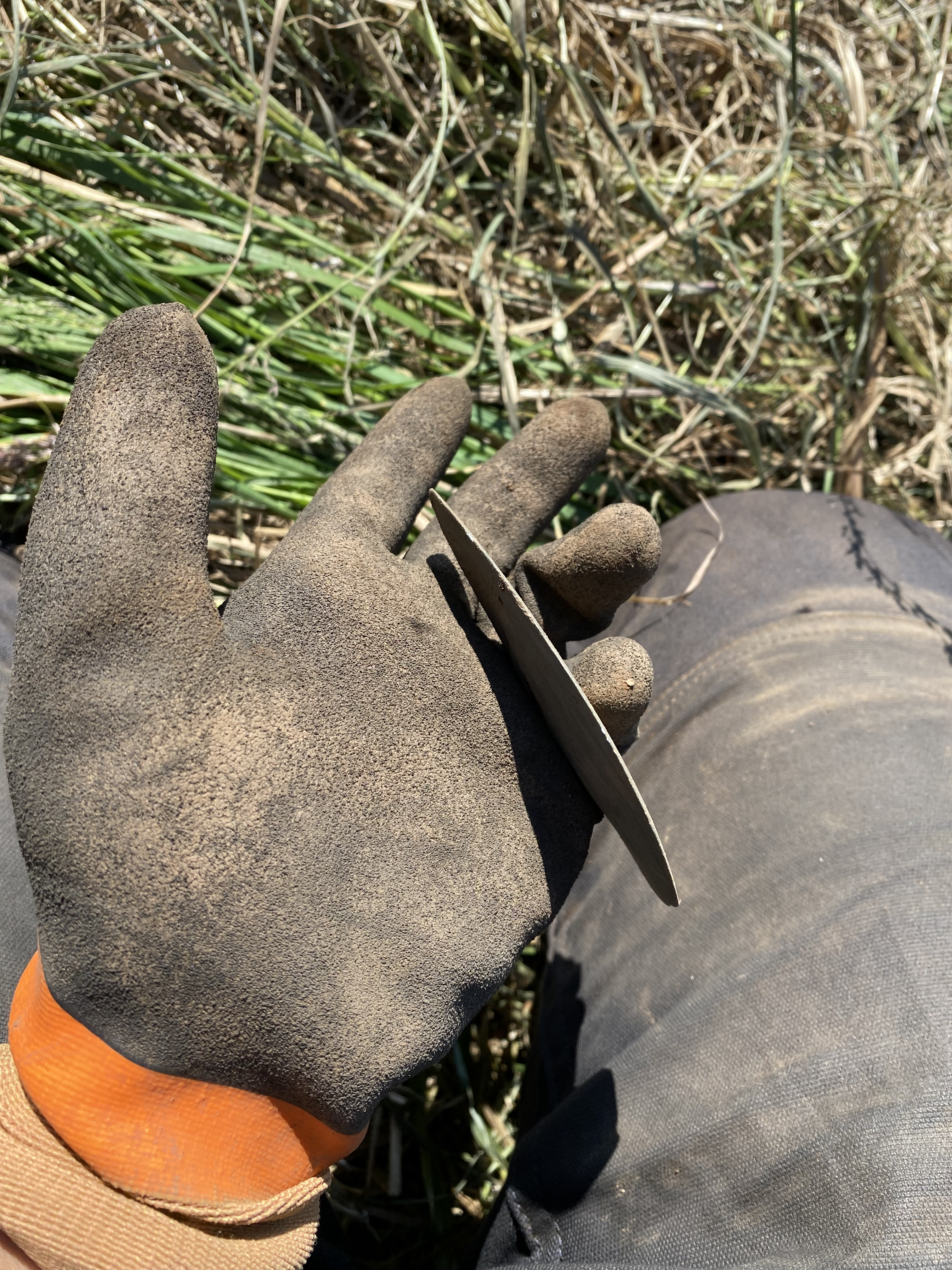




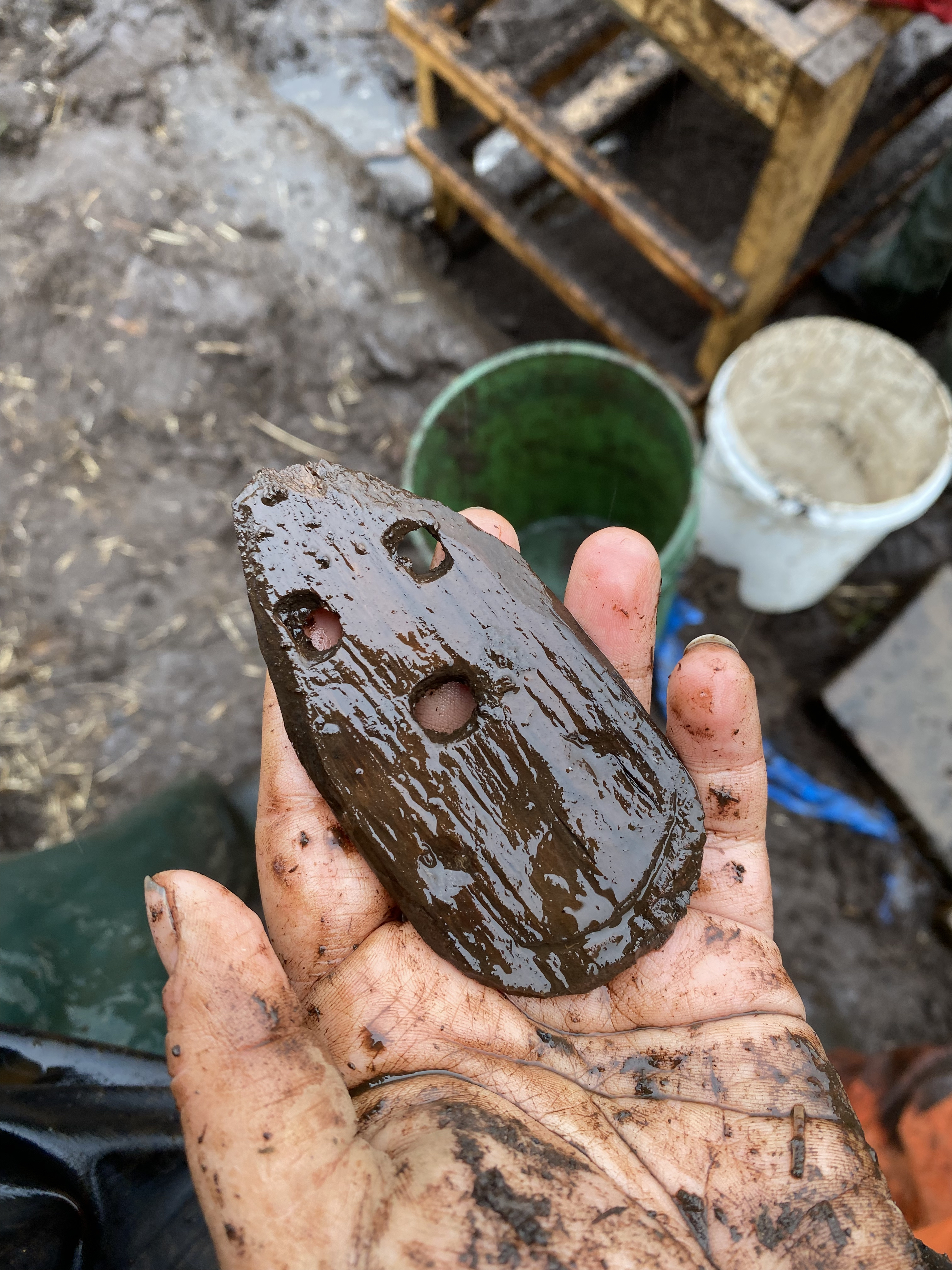


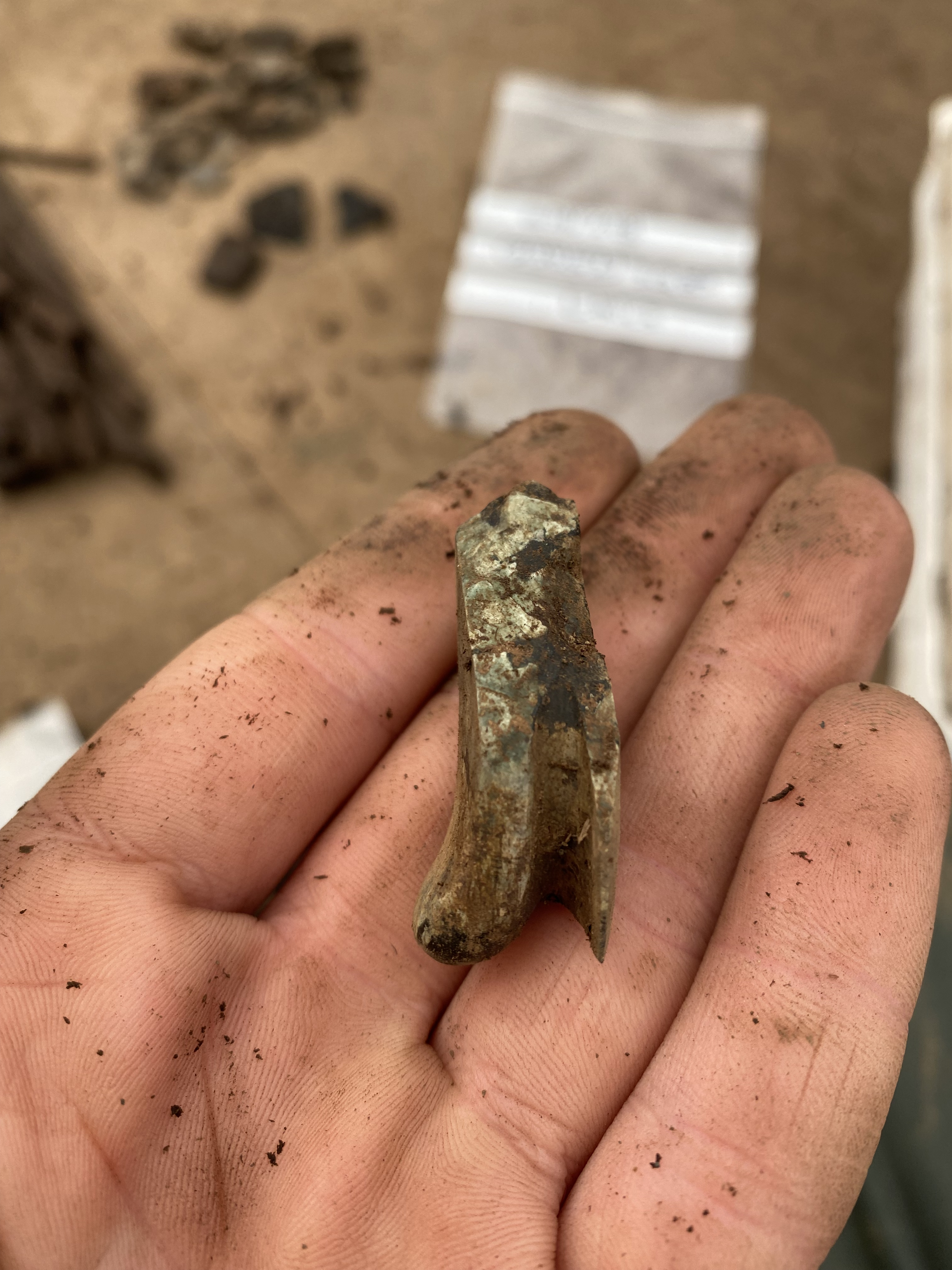
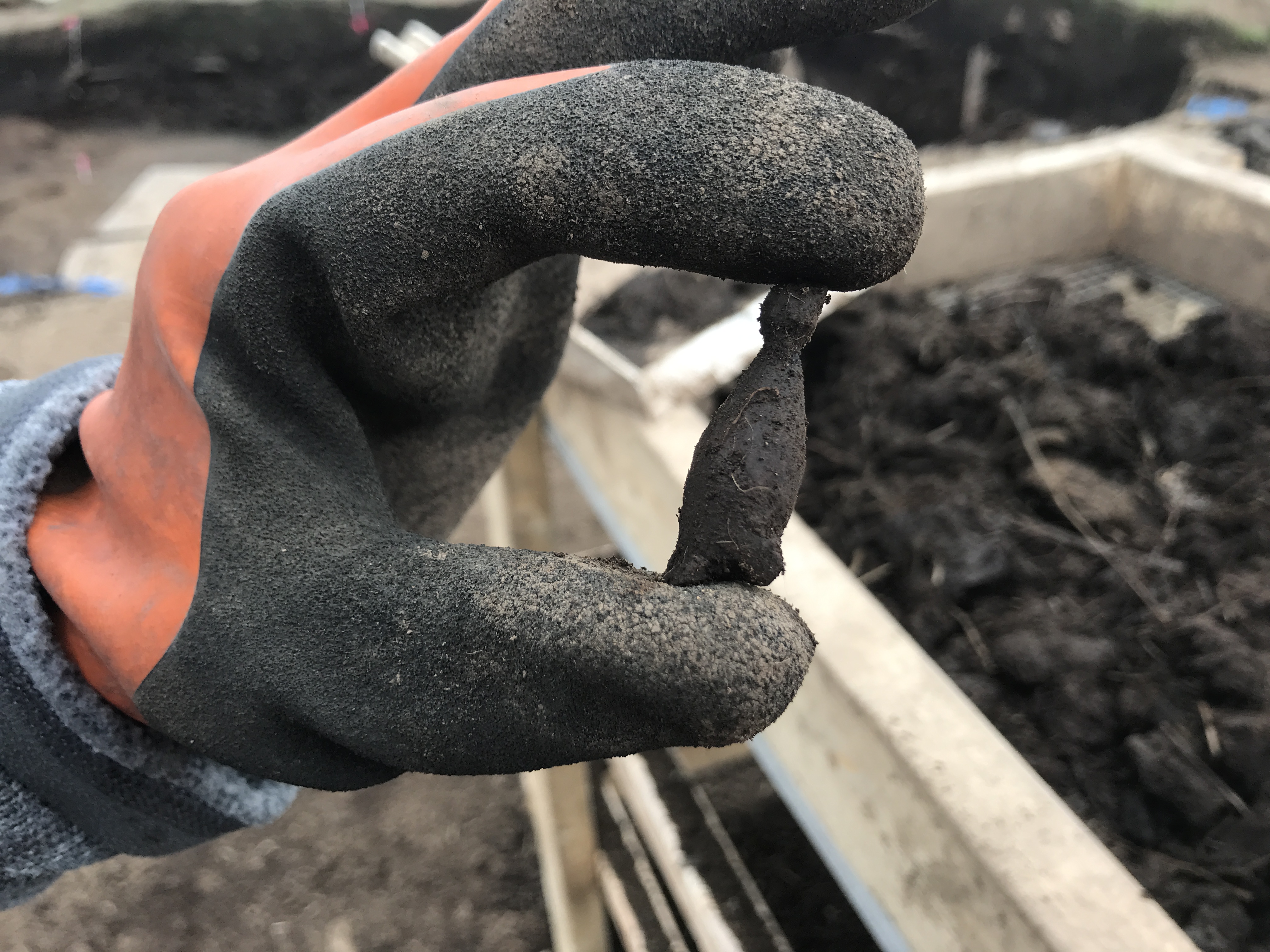

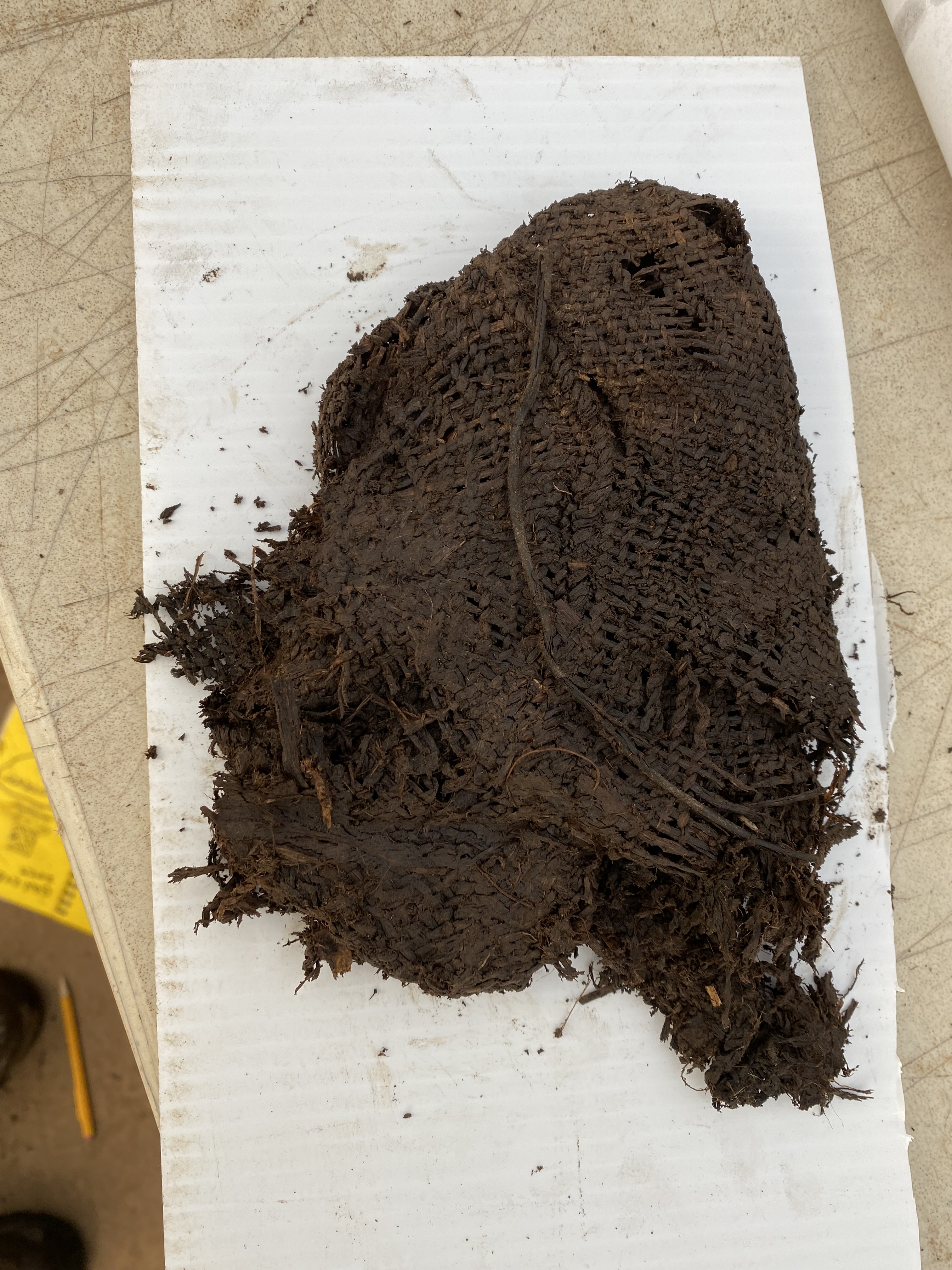

While digging at the Nunalleq site, we were visited by John Smith, a village elder and master ivory carver. Noticing the general confusion about a pile of wood shavings, John informed us that these were traditionally used as sandpaper, rubbed on wooden objects to create a smooth surface.
John Smith’s assistance is just one example of the larger Quinhagak community providing us with the knowledge of their ancestors and explaining how artifacts would be utilized in pre-contact Yup’ik life. These moments reflect the heart of the Nunalleq Archaeological Project – working alongside the Yup’ik people to help facilitate the connection with their heritage, which was nearly severed by colonialism. Despite such attempts, the Yup’ik people and culture are not lost to history but remain alive and just as innovative as their ancestors.
The discovered artifacts will remain in the village, housed in the Nunalleq Museum. The museum creates a space for the villagers to gather, feel connected with their heritage, and reclaim a narrative which they had been prevented from possessing.
Community-based archaeology practiced here allows for a much deeper appreciation of the artifacts and for the people who made them. With the incorporation of Indigenous knowledge, we become better archaeologists and reaffirm the importance of learning about the past.
This seal mask, found by Hannah Strehlau, came within centimeters of being found on multiple occasions. First by looters, likely in the 60’s, and then again more recently during a previous field season. However, it seems that it was not ready to be found until now! The mask was located in an area which will be eroded by the Bering Sea sometime in the next few months. Its location highlights the harmful effects of climate change and the urgency of the Nunalleq Project.

(Pictured below) William Powell finding his first fertility doll on one of the rare sunny days! – looks as though it could have been carved yesterday!
The anticipation of unearthing the next incredible find made it difficult to escape into the tent for our daily lunch of Cup Noodles and Nature Valley Bars. However, when a furry friend wandered onto the site, there was no hesitation in putting down the trowel!

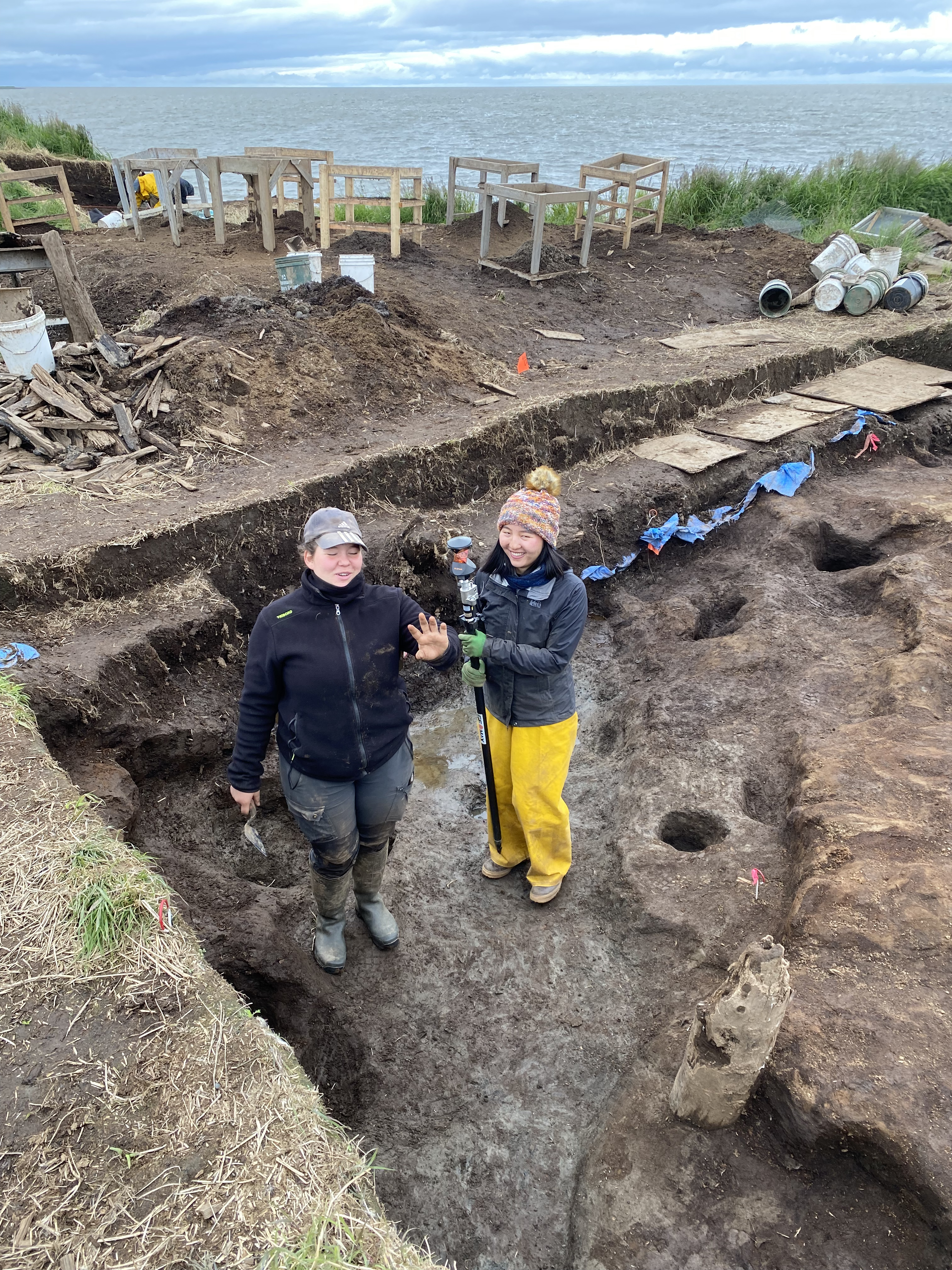



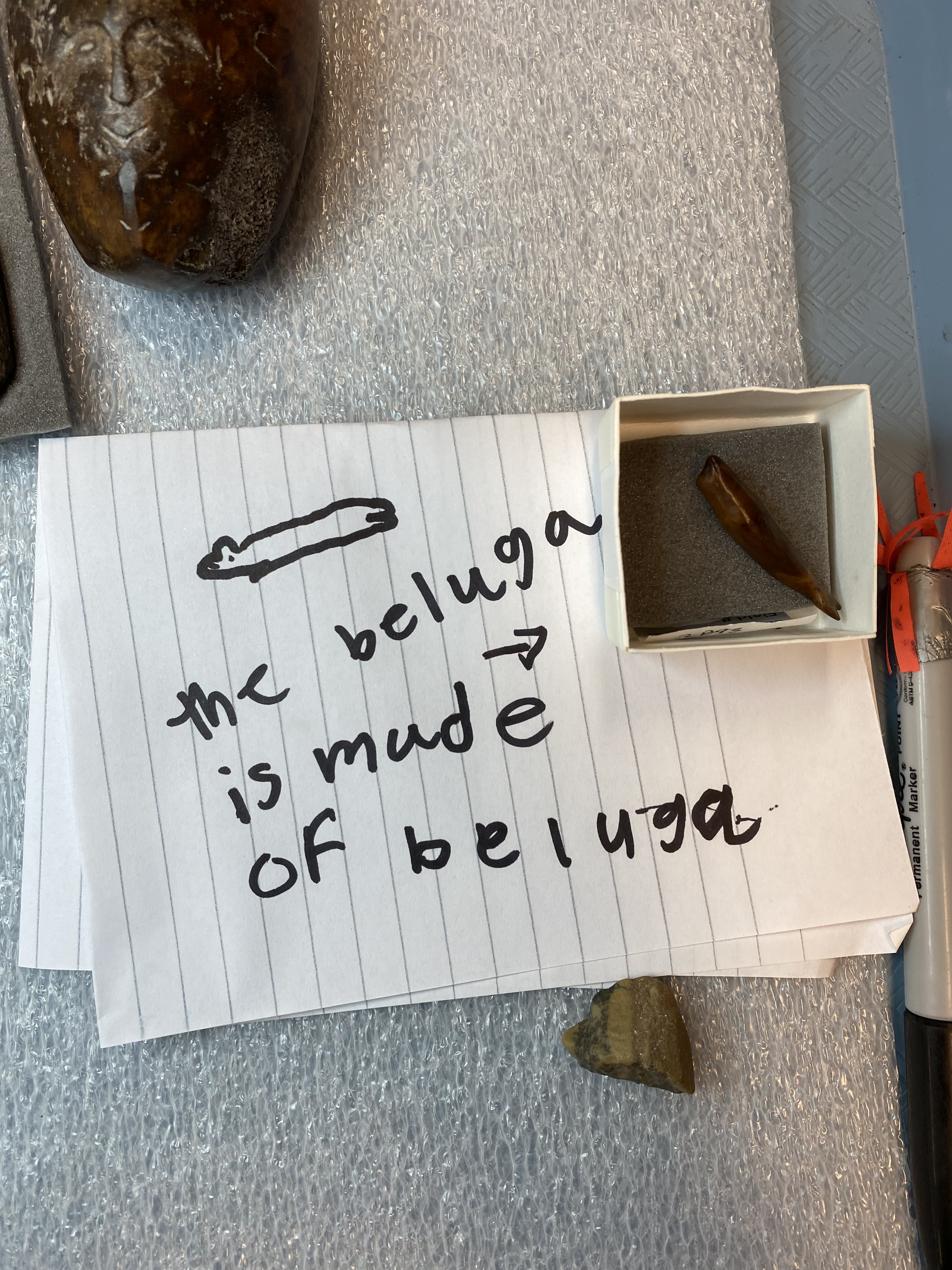
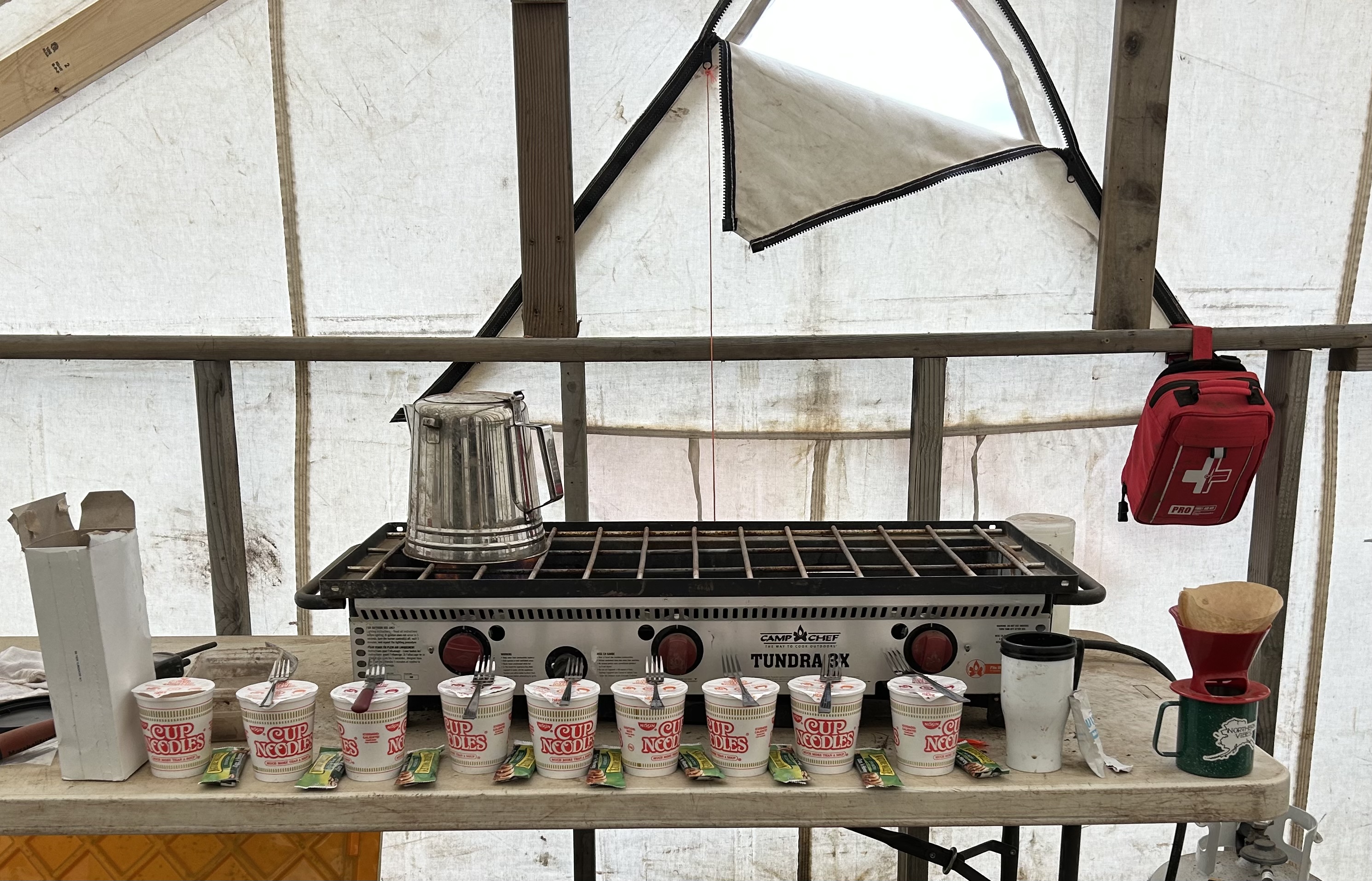



Spending time in Quinhagak means we get to experience one of the most beautiful places on Earth.




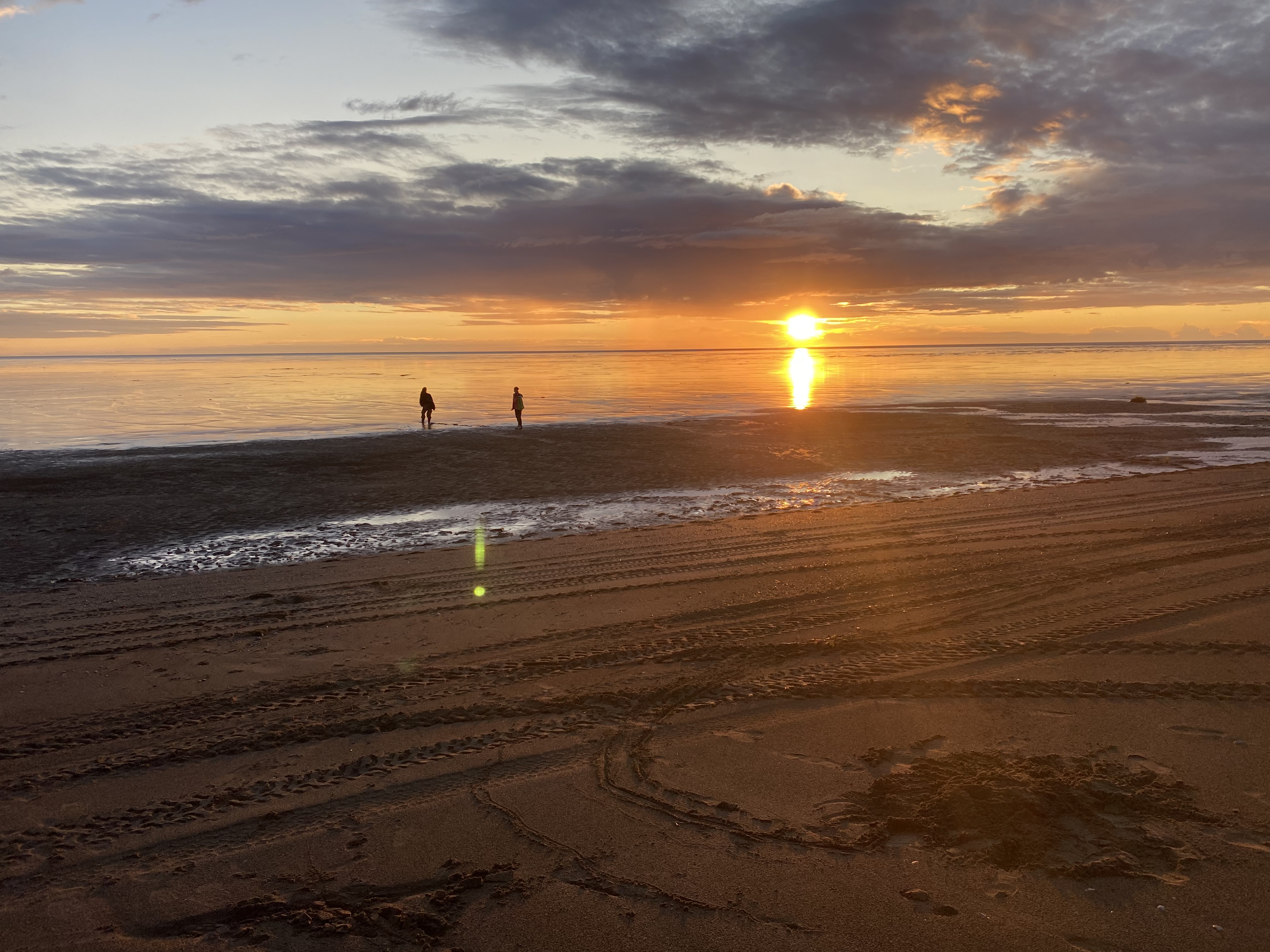
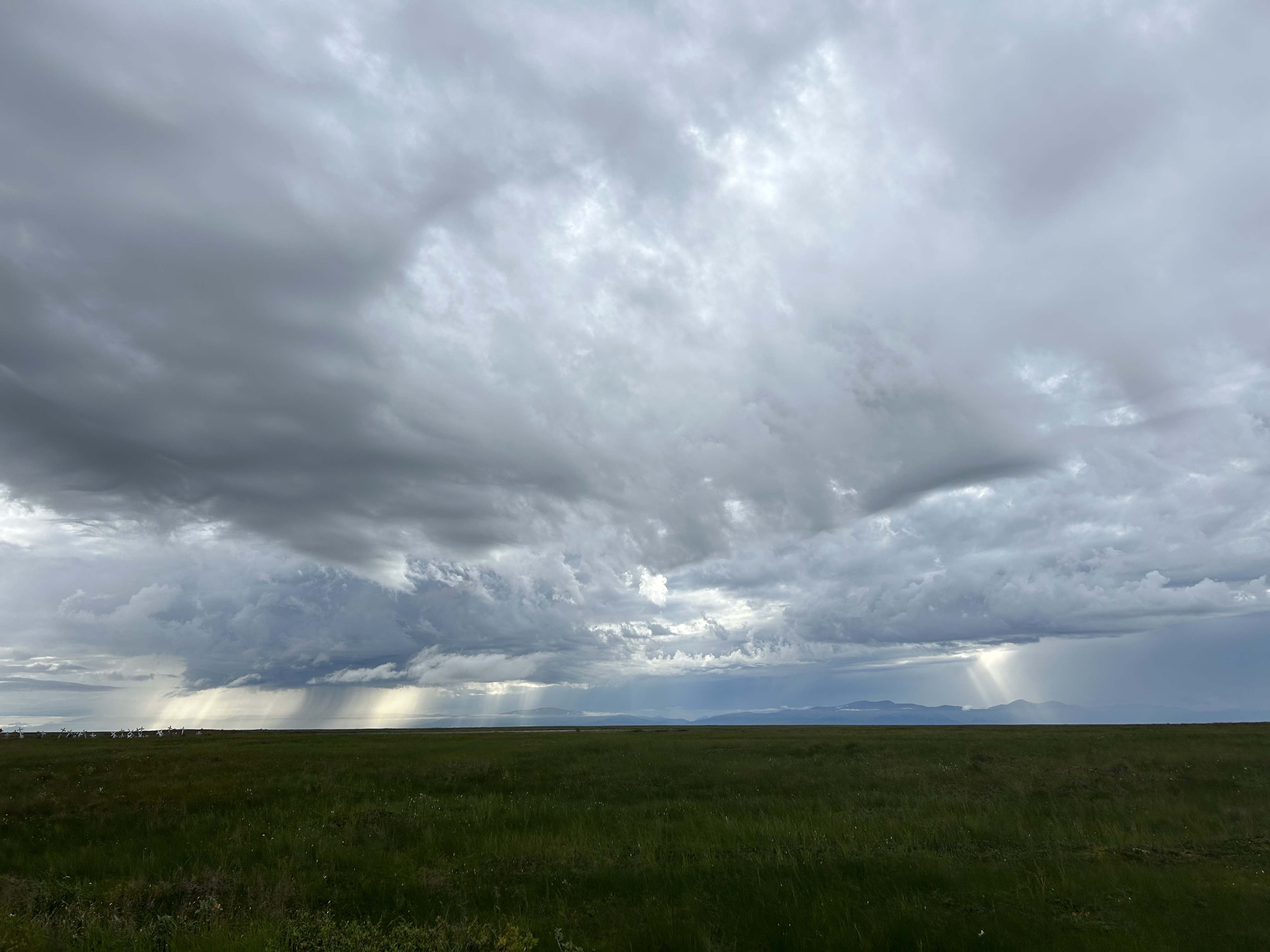





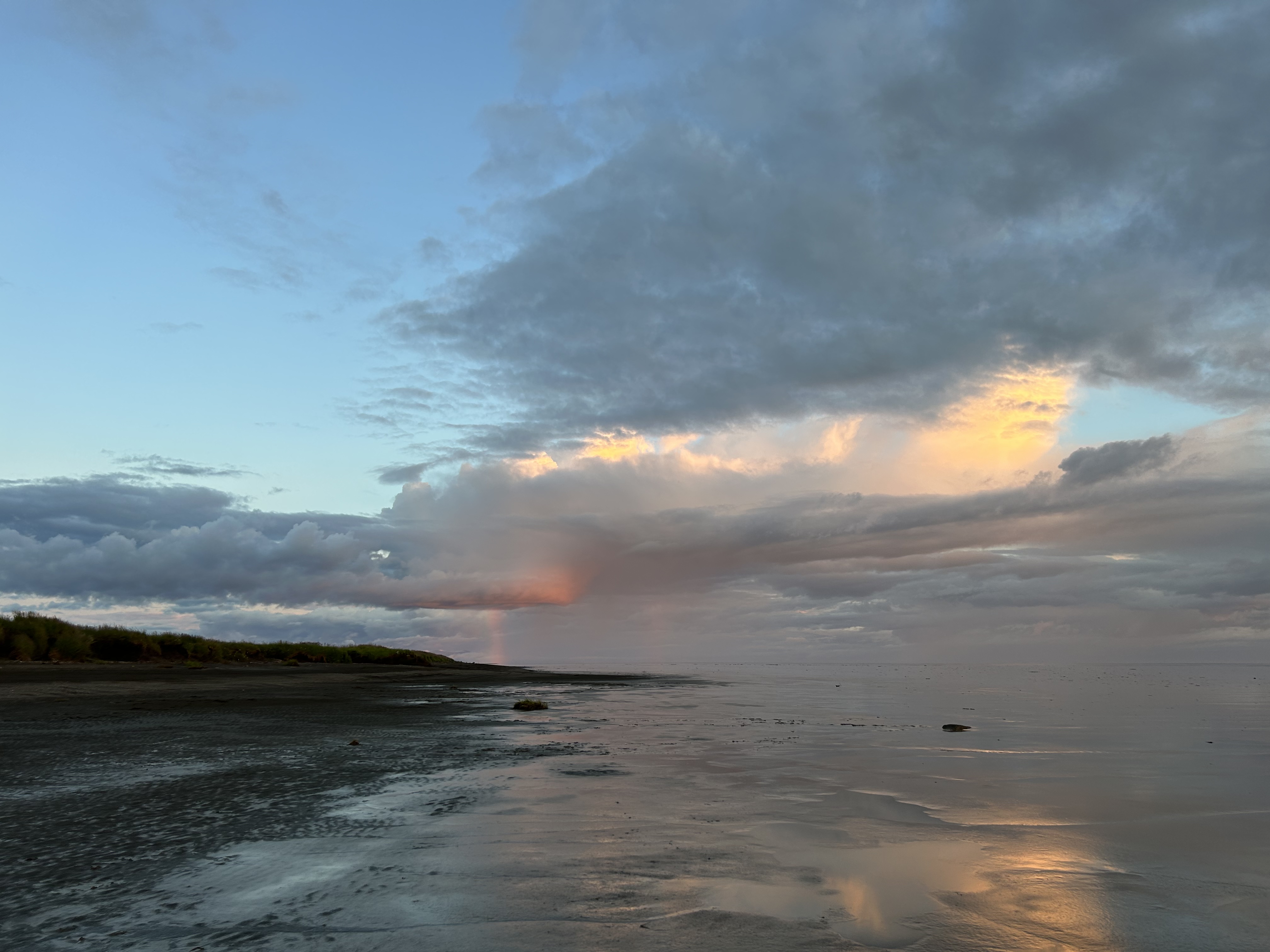





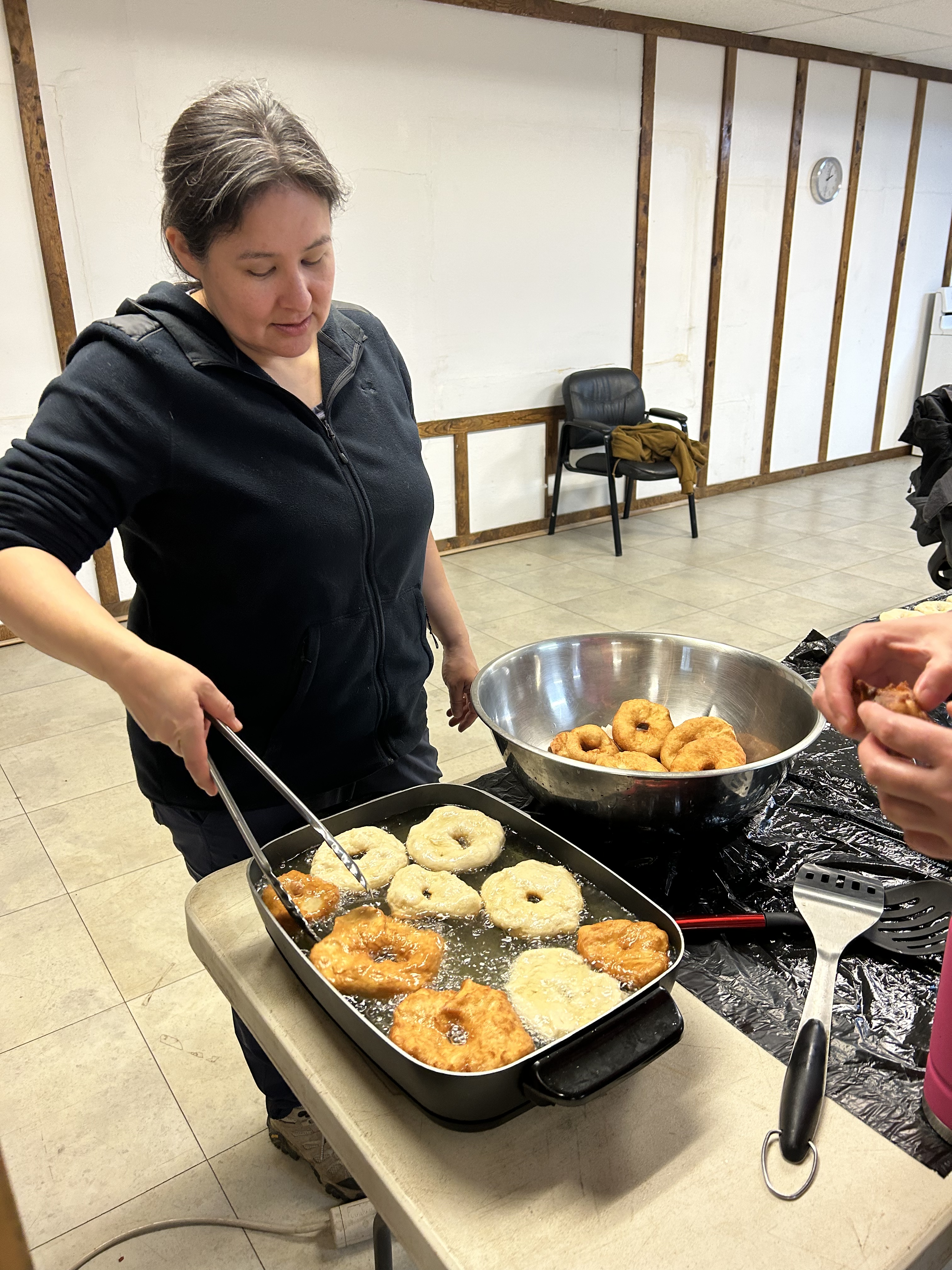
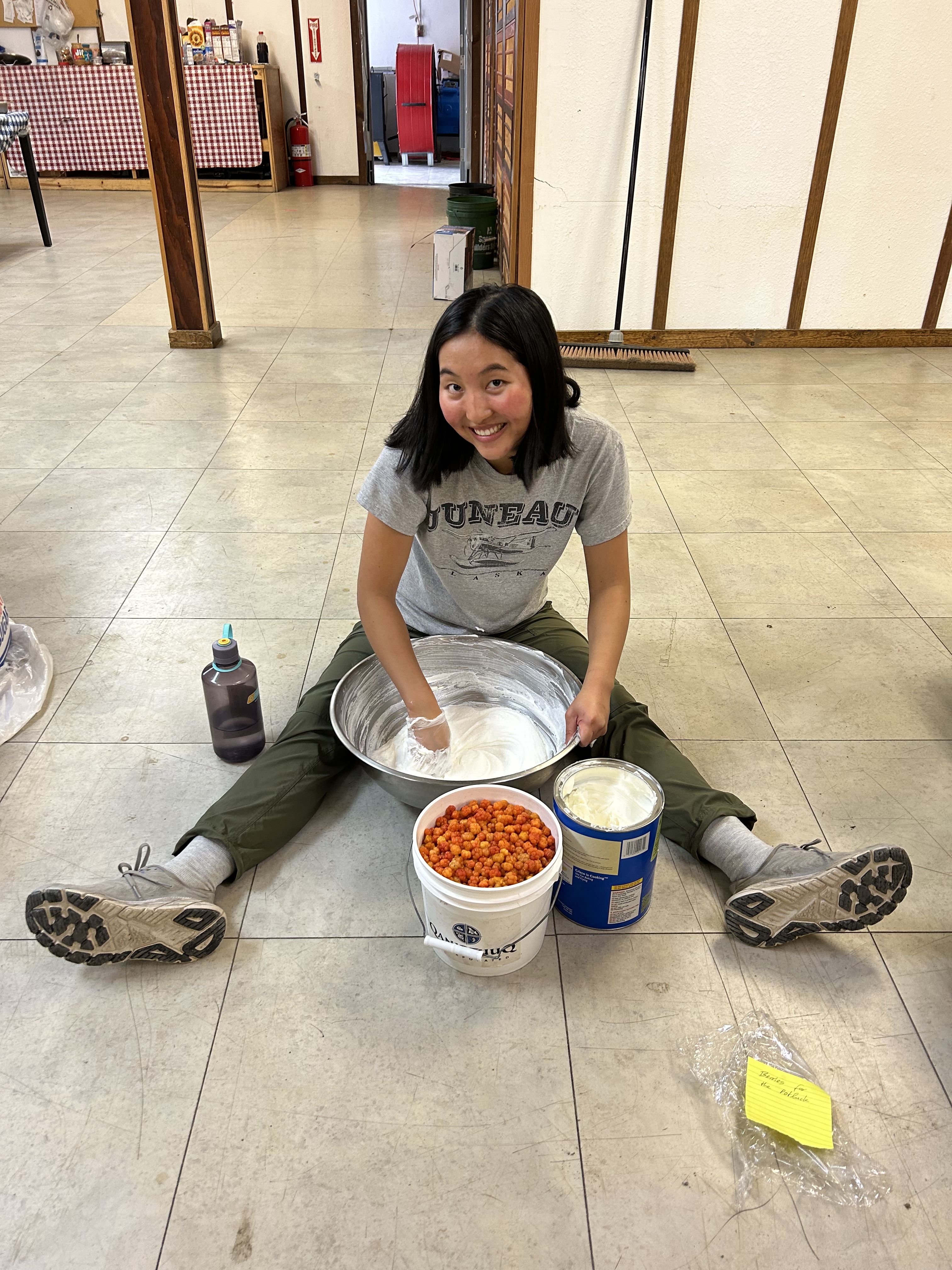
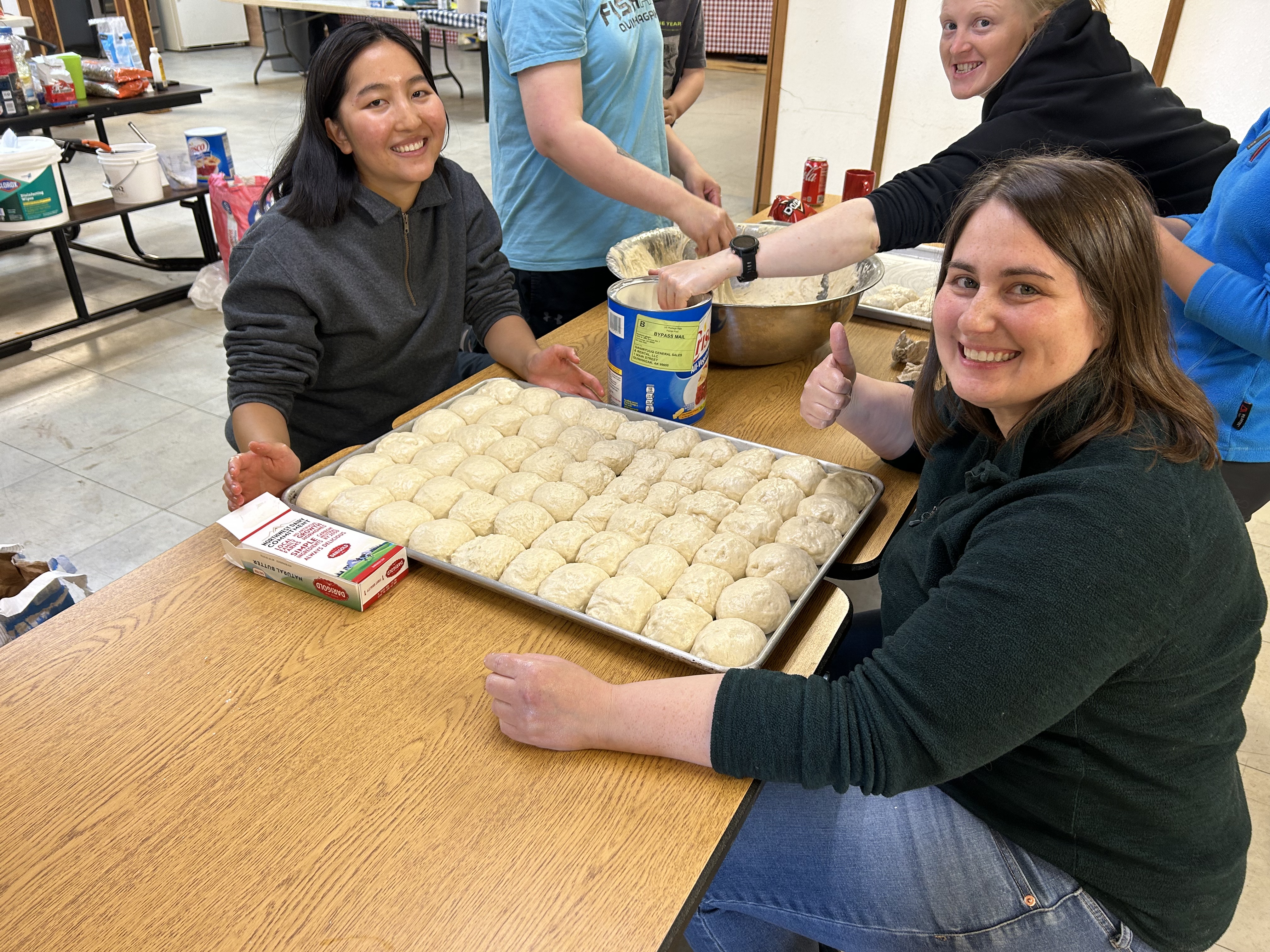
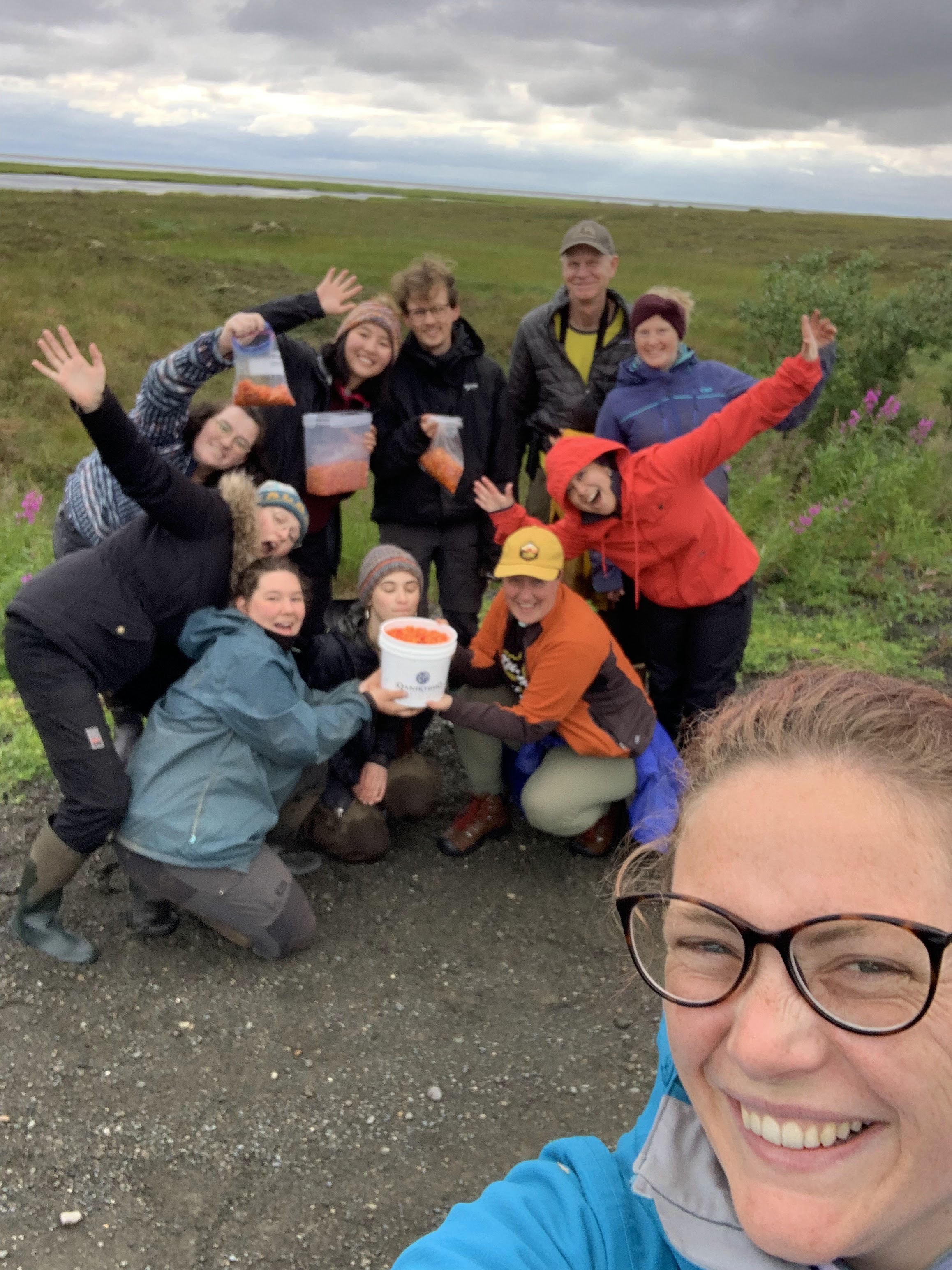



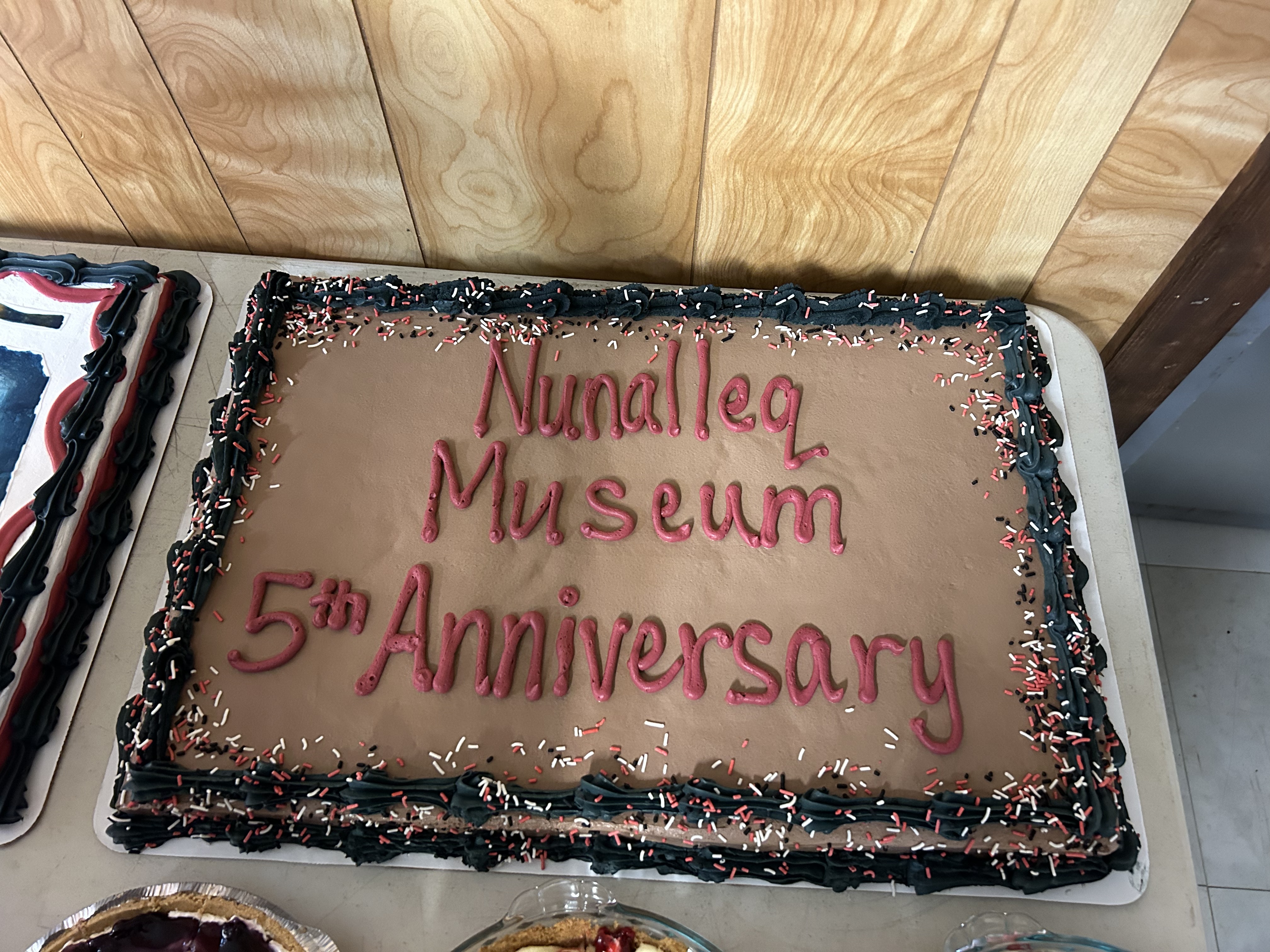
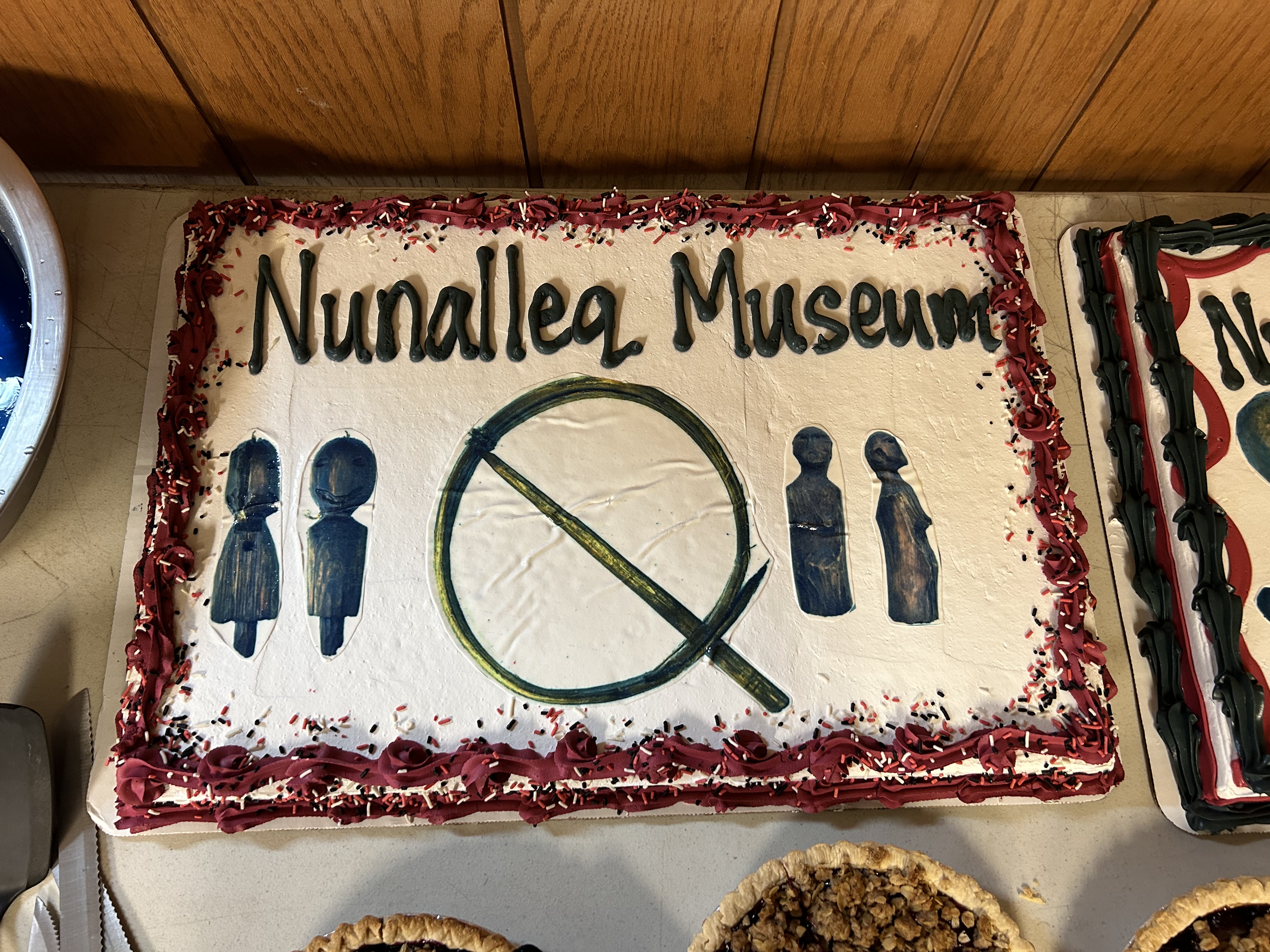
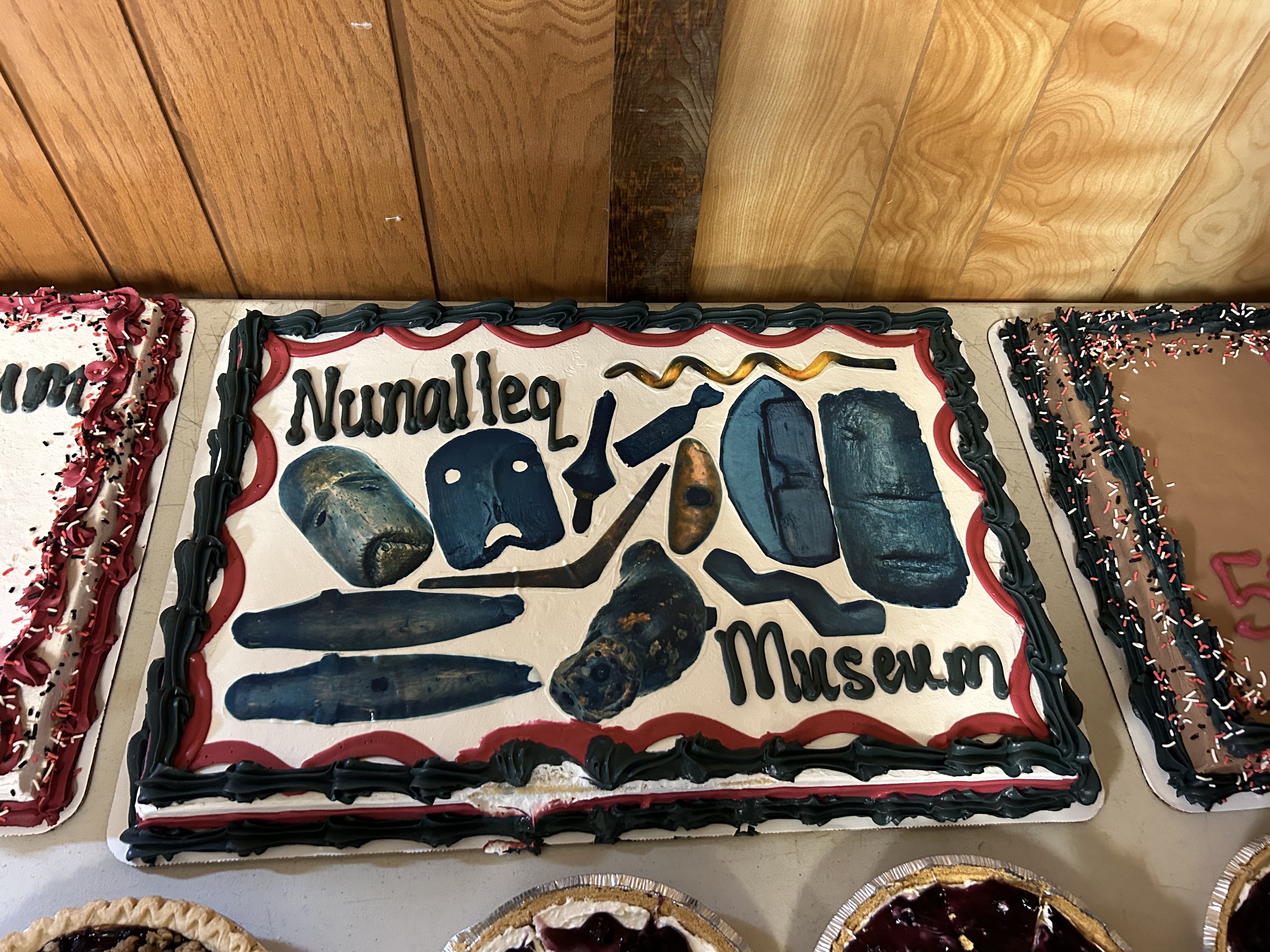
To celebrate the conclusion of the 2023 season and the 5th Anniversary of the Nunalleq Museum, a potluck was held for the entire village of Quinhagak!
To help prepare, we had the special treat of learning how to make Yup’ik foods such as frybread and akutaq, or Eskimo ice cream. The fluffy frybread in Quinhagak is in the shape of a donut. However, volunteer and Yup’ik artist Jen Angaiak Wood (pictured above) told us that in other Yup’ik villages, the bread is shaped differently. Her grandmother’s recipe called for multiple holes and was crispier as a result. Akutaq, meaning mixture, was traditionally a mix of seal oil, snow, and local berries. To prepare this sweet treat, we went out and gathered ripe salmonberries, a local delicacy. Nowadays, akutaq is made with ingredients such as Crisco, Cool Whip, sugar, and mashed potatoes. Ginny and Rebecca (both pictured above) both tried their hands at making akutaq. After about 45 minutes of mixing by hand, they discovered that making akutaq is truly hard work! Akutaq has been a favorite dessert of the team throughout these past few weeks, and we have enjoyed trying all the varieties!
To represent the international composition of the team, some of us made food from our home countries. Fernanda (pictured above), who is originally from Mexico, made churros. We absolutely loved the three beautiful cakes made by the village store for the occasion. The village also came together to make traditional foods such as seal ribs, walrus soup, whale, and moose. Thank you to Alexis and Lynn for making the potluck happen!
These past few weeks have been some of the most inspiring, impactful weeks of our lives. They have left an indelible mark on us and have given us wisdom and connections which we will carry throughout our careers and lives. Quyana to our mentors on the site and to Quinhagak for welcoming us so warmly!

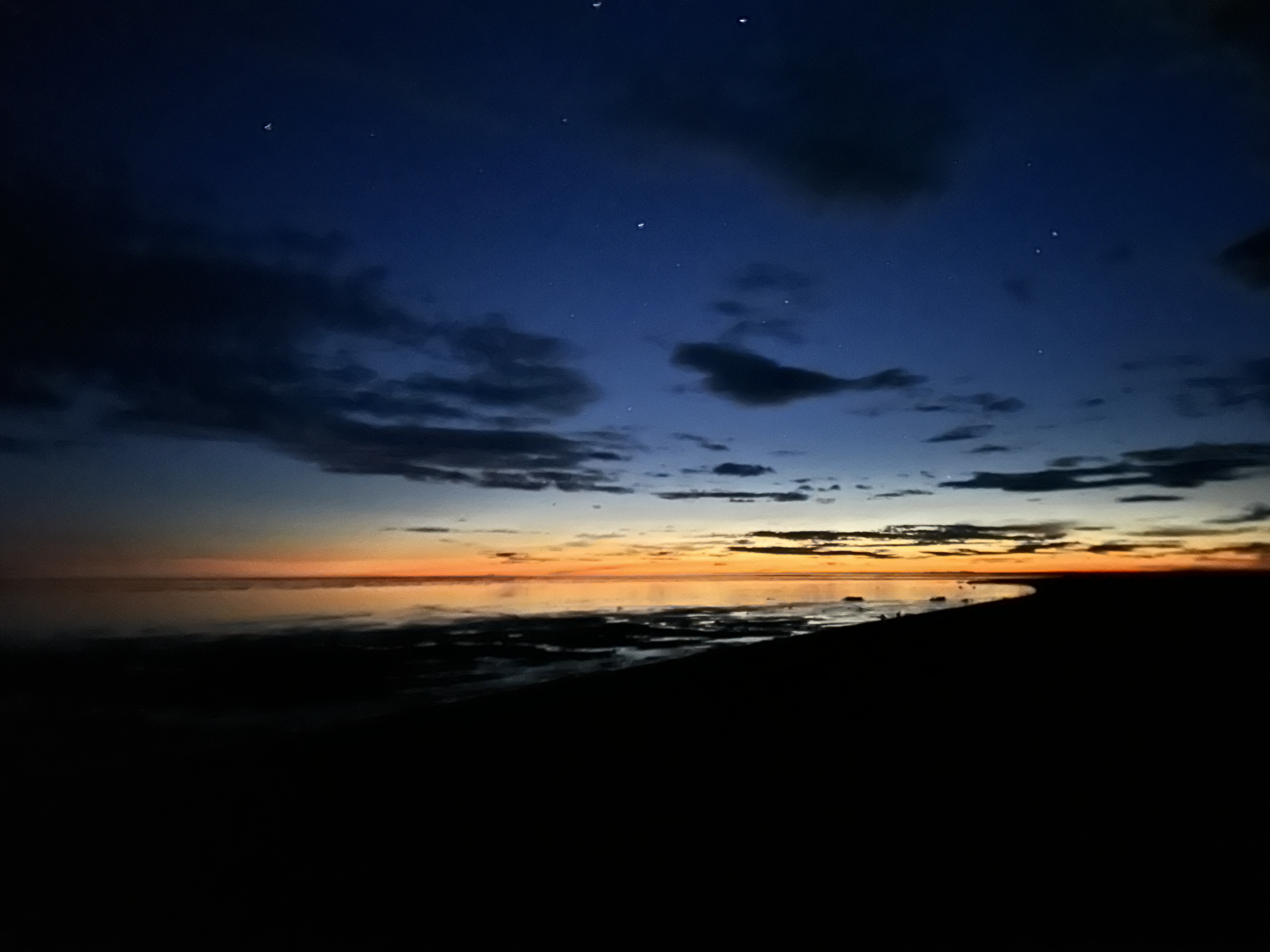

~ THE END ~
Text and photos by William Powell, Ginny Sunde, Karoline Hobock, Emmett Culmsee
